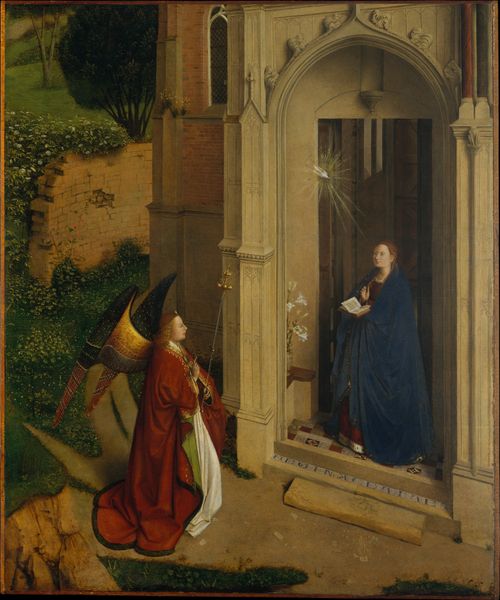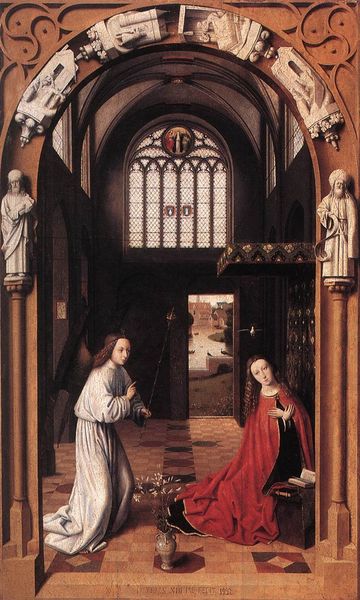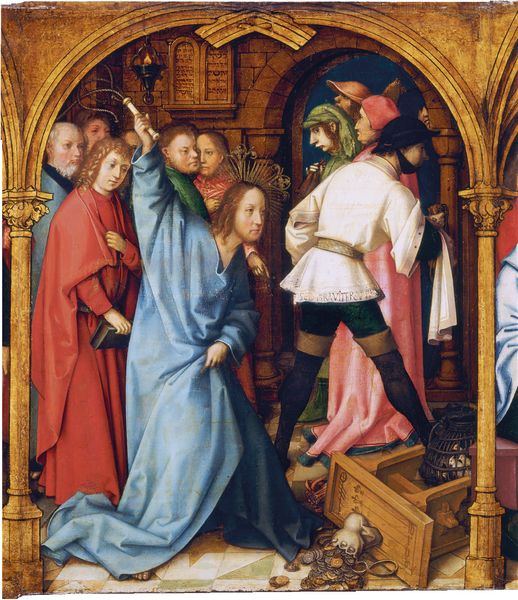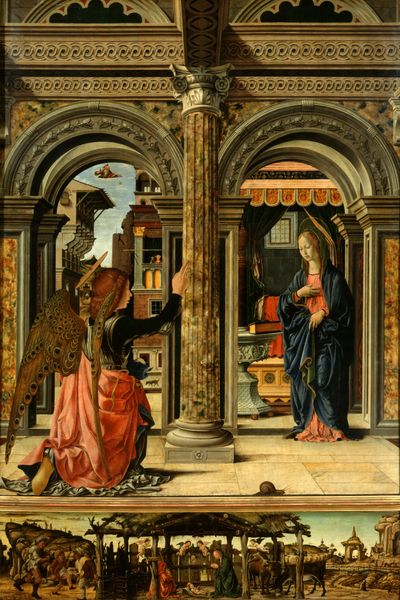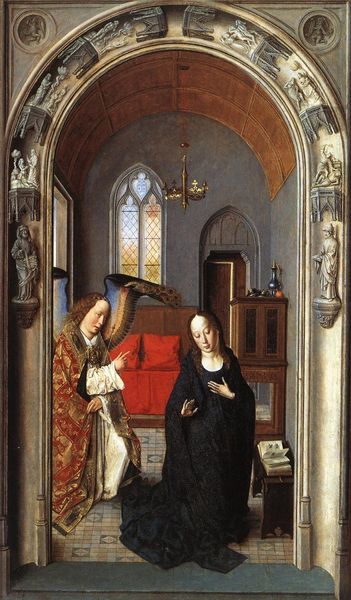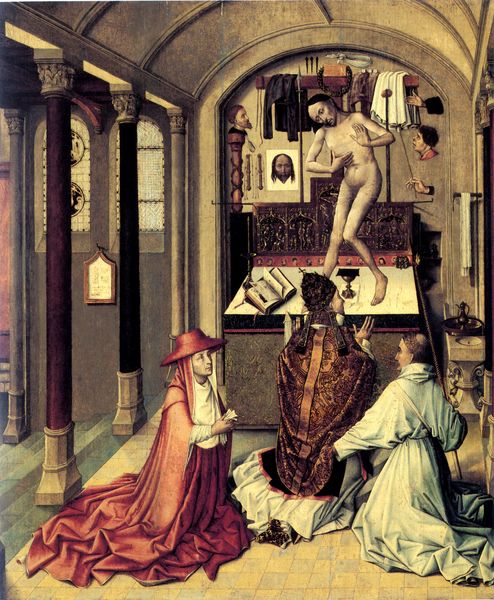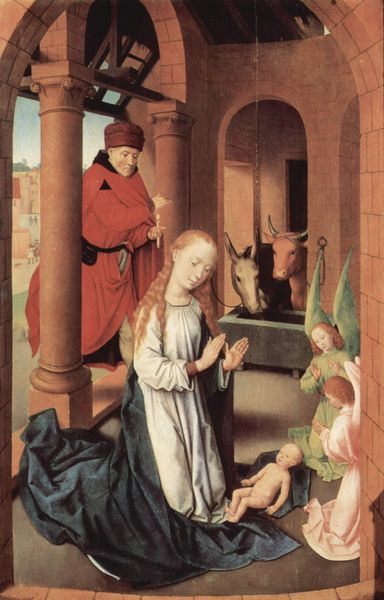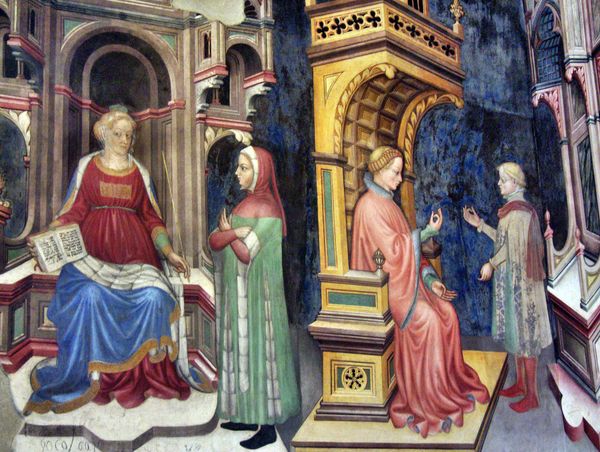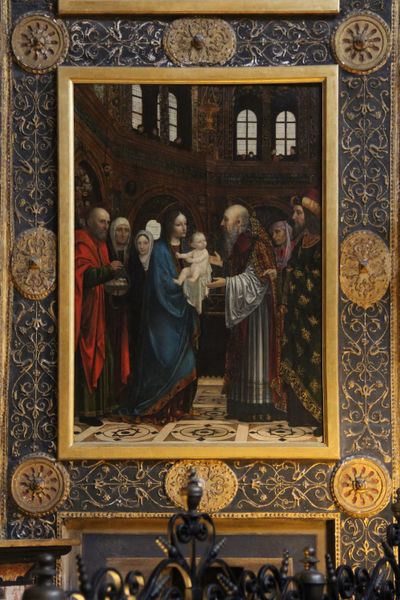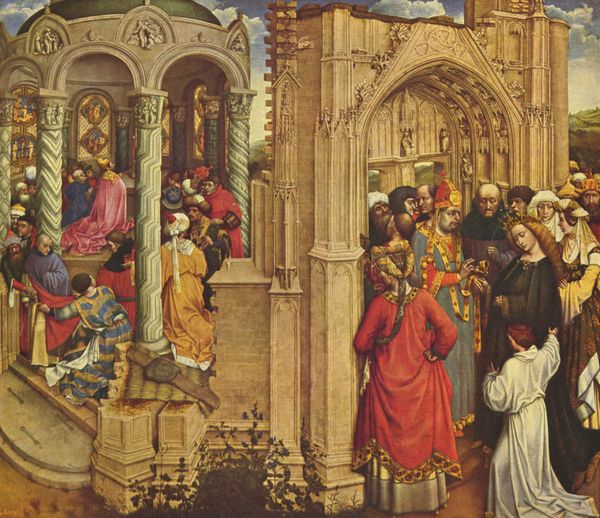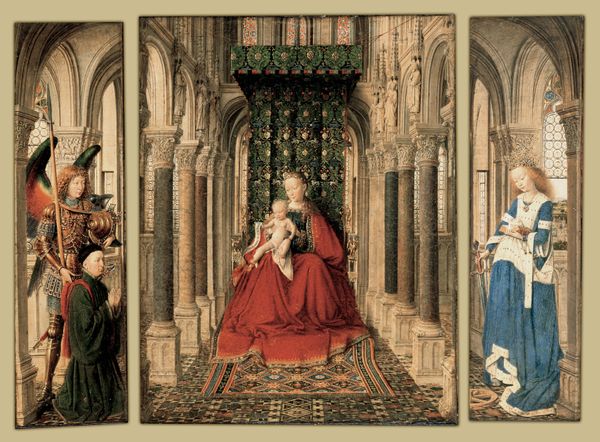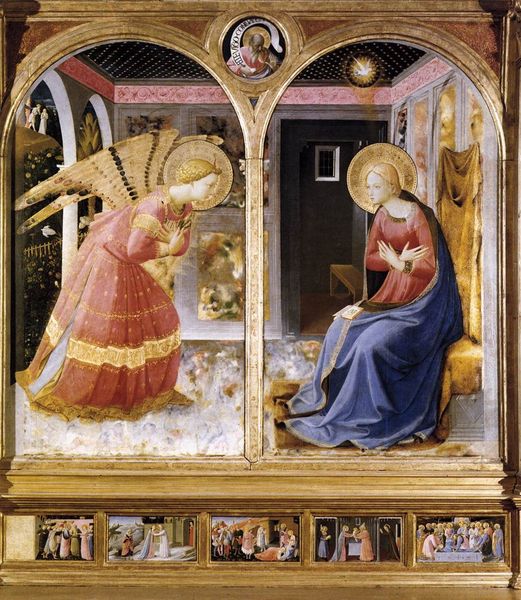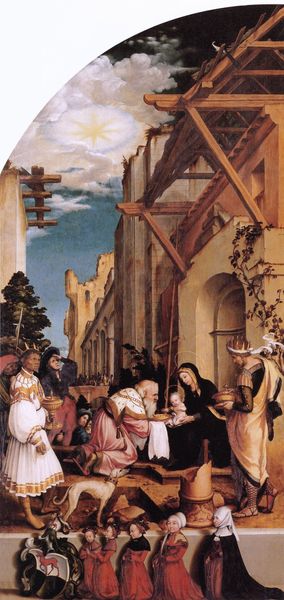
tempera, painting, oil-paint
#
medieval
#
narrative-art
#
tempera
#
painting
#
oil-paint
#
gothic
#
christianity
#
history-painting
#
early-renaissance
#
virgin-mary
#
angel
Dimensions: 70 x 76 cm
Copyright: Public domain
Curator: Robert Campin's "The Annunciation," dating from around 1430, is rendered in oil and tempera. The scene hums with quiet tension. The composition is like a whisper before a storm, isn't it? Editor: Precisely! I am immediately drawn to the angel, draped in that vibrant robe; it pops against the understated hues of the Virgin's chamber. I wonder about the dyeing processes of that time and who created these beautiful objects. Curator: Excellent point! Campin was pioneering techniques, and that red is likely achieved with madder or kermes dyes. But consider also the Virgin’s attire: The rich blue hints at the trade routes necessary to acquire lapis lazuli for ultramarine pigment. The textile trade was important to medieval social economies. Editor: Oh, it is not just the blue. The building dominates almost more than the people involved in the interaction! It overwhelms Mary and makes Gabriel’s task of reaching Mary harder and shows off that you don’t even have to leave home to meet an angel. Curator: Agreed. And consider what's happening: an angel interrupting domesticity. Even the architecture – this detailed, sprawling space – emphasizes earthly craft intersecting with divine intervention. Look how that attention to architectural detail blends everyday reality with something transcendent! Editor: Right, there's that sense of breaking through a boundary... The use of tempera and oil mixes the precision of the old with this new movement toward realism that would just keep rolling! There is such potential in the paint in and of itself and I wonder how Campin understood that! Curator: Indeed. These advancements facilitated richer colors and finer details. This convergence of materials and the human labor that sourced and shaped them into art is precisely where true meaning lies. The creation becomes more than just religious instruction; it documents advancements in medieval and early Renaissance life! Editor: I think you nailed it!
Comments
No comments
Be the first to comment and join the conversation on the ultimate creative platform.
